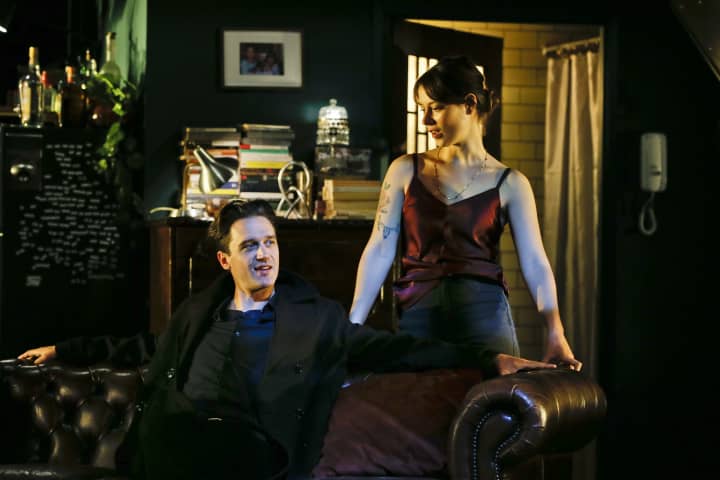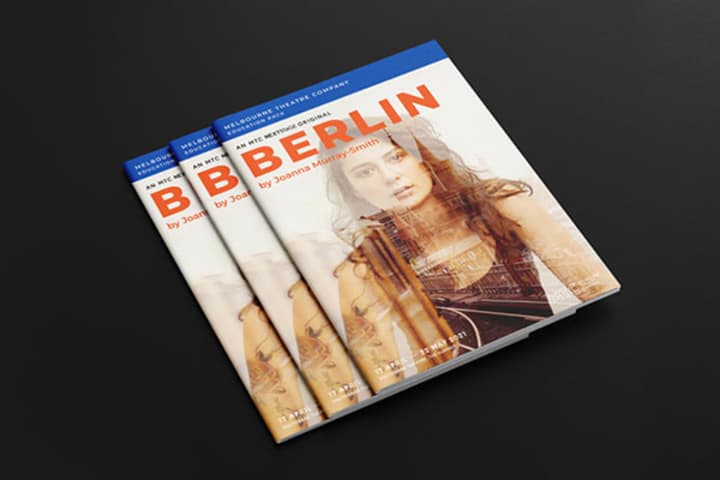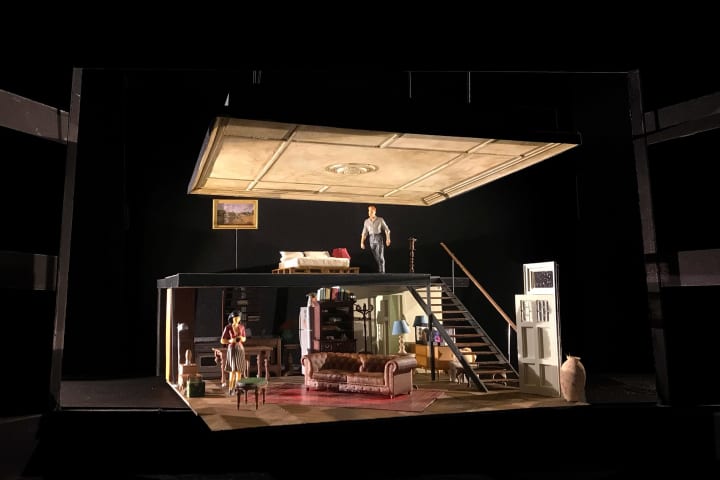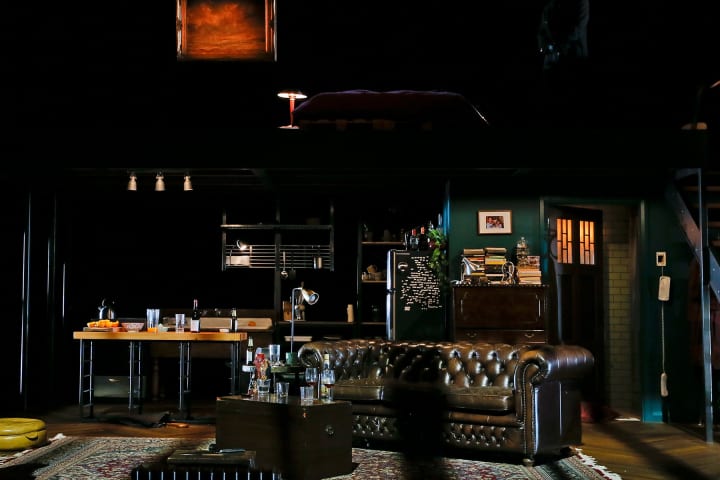Learn more about Niklas Pajanti’s lighting design for Berlin in this Q&A.
How would you describe the lighting design you’re creating for Berlin? What is the world of this play?
‘The lighting design is a combination of realistic apartment lighting, lamps, kitchen and bathroom lights, fridge light etc. and also a more stylistic form of lighting built on theatrical fixtures using side lights, with a very low angle of light more often seen in contemporary dance.’
What kinds of lights are you using in your design?
‘A combination of traditional tungsten theatre fixtures and a lot of LED fixtures.’
In your opinion, what is Berlin about? How does your design support the play’s big ideas?
‘Berlin is about moral responsibility and the ethics of profiting from the actions of our parents and grandparents. The play is framed a little as a thriller or mystery, so my lighting design is a bit noir-ish, taking inspiration from classic films like The Third Man (1949).’
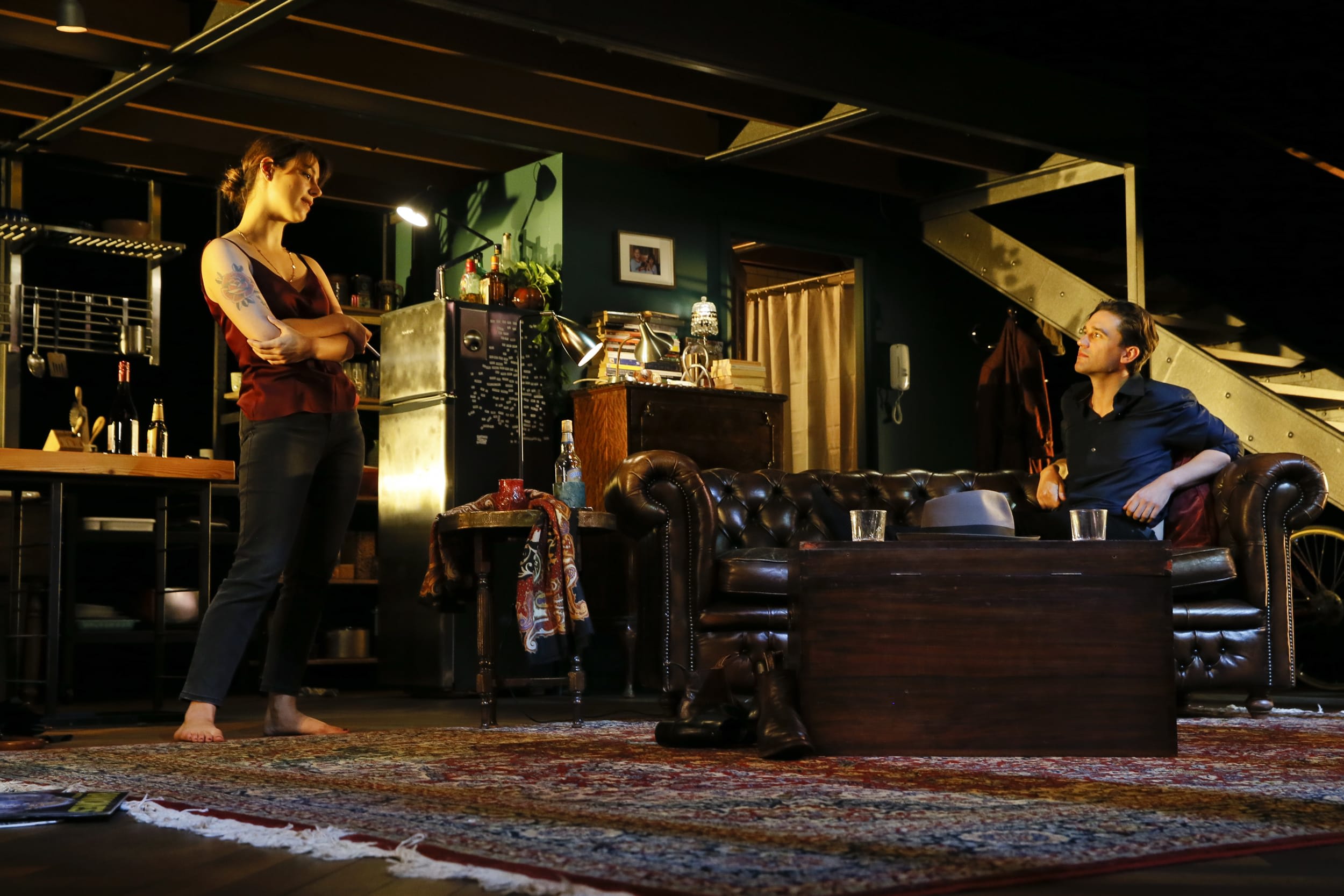 Grace Cummings and Michael Wahr. PHOTO: Jeff Busby
Grace Cummings and Michael Wahr. PHOTO: Jeff Busby
There are several practical lights within the set design – how are these used differently to lights in the rig?
‘The practical fixtures, or pracs, are the realistic lights in the apartment. They provide a mood or aesthetic feel that grounds the play in reality.’
Is there a particular moment in the play that you’re especially excited about, regarding your design?
‘As the play is new, and has never been put on before, the whole thing is exciting to me. I have no idea really how it will look by the time we get to opening night.’
What has been the most exciting challenge to solve on this production?
‘The most exciting challenge has been to actually light people inside the apartment. The set design blocks almost all traditional lighting angles that you would normally expect; the ceilings, stairs, and stage thrust all limit available lighting positions, so working out where I can and can’t get angles to light from has been quite a task. In a way this forces my design to be unique, with strict limitations. I find that this sort of restriction often helps create a better lighting design.’
Published on 6 May 2021

